
Non-GMO vs. Organic: Making Sense of Food Labels
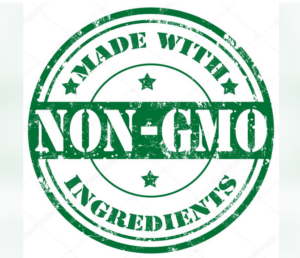
ARTICLE AT A GLANCE:
- Food labels can be confusing, so it’s important to understand what different phrases mean to buy the highest quality products to support optimal health
- Non-GMO signifies that the food was not genetically modified in a laboratory, while
- USDA Organic means that common pesticides and toxins were not used
- Whenever possible, choose food products that are USDA organic (which are also Non-GMO)
Food labels are not always easy to follow. Different legal definitions as well as marketing buzzwords can cause confusion, so it’s crucial to dive deeper into what certain terms actually mean so you can make smart purchasing decisions.
In the world of health and wellness, two popular terms that you’ve likely seen are “Non-GMO” and “USDA Organic.” Here’s what they mean and why they matter for your health:
Non-GMO signifies food that is made from ingredients that were not genetically modified, meaning they weren’t grown in a laboratory or otherwise chemically manipulated.
USDA Organic means the foods were not produced using certain pesticides and chemicals, including Round Up (Glyphosate), Hexane, or antibiotics.
The negative effects and risks of consuming both pesticides and genetically modified organisms (GMO foods) are well documented. Toxins found in herbicides can irritate the gut, increase inflammation, and have even been linked to cancer. Additionally, studies have shown that GMOs can cause organ damage, accelerated aging, infertility, and other problems.
In order to achieve optimal health and functioning, you’ll want to avoid both genetically modified foods as well as food products grown with pesticides. And here’s the trick: USDA organic foods are also non-GMO, while non-GMO foods are not necessarily USDA organic. So when in doubt, look for the USDA organic label to help you pick better options!
Eating organic and non-genetically modified foods can be more of a financial investment, but the pay-off makes it worth it: less doctor bills, less misdiagnoses, and of course greater peace and happiness for your child and your family.
*This website is provided for informational purposes only and is not intended as a substitute for the advice provided by a healthcare professional.
References
- How To Read Nutrition Labels
- What Fruits & Vegetables Should I Buy?
- Your child’s attention span, mood, and behavior may be the sign of an unhealthy gut
- Which Fruits & Vegetables should I buy?
- Ten Reasons To Avoid GMOs
- Pesticide Action Network- Cancer
2R Protocol – Why You Can’t Just Remove Sugar From Your Diet
ARTICLE AT A GLANCE:
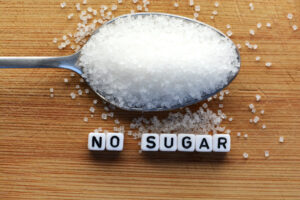
- Maintaining a healthy gut is key to optimal functioning and brain health
- The 2R protocol guides us to remove not only sugar but also wheat, dairy, and pesticides
- Including high-quality dietary supplements helps us consume the proper nutrients to repair a compromised immune system, decrease inflammation, and improve overall health
When seeking to alleviate the symptoms of autism, we know that easing inflammation and healing the gut leads to optimal brain functioning and improved outcomes. In order to achieve this, it’s crucial to eliminate dietary toxins so that the brain can fully develop because it is not fighting off threats.
2R Protocol
The 2R protocol instructs us to remove as much sugar as possible. The harmful effects of sugar are well-documented and include inflammation of the gut, insulin resistance, and even obesity. Cutting down on sugar intake can bring significant relief to families of children with autism and individuals struggling with their health. But removing sugar alone is not enough.
We also need to remove wheat, dairy, and pesticides. Some of the proteins in wheat and dairy are known to act as gut irritants that cause inflammation. Wheat can disrupt the microbiome of bacteria and can increase vulnerability to certain brain problems.
Pesticides are equally problematic and can cause a weakened immune system and even contribute to cancer. Just say NO!
Supplements
In addition to removing certain foods and toxins, we also need to repair our bodies through supplementation. While technically, it is possible to get all the nutrients and minerals needed to thrive through food alone, it is challenging. So supplements help us make up for what we lack from our diet. A good multivitamin, digestive enzymes, and a fish oil supplement are great places to start. These supplements can improve heart health and mental clarity and support a robust immune system.
Please read here for more about the benefits of supplements and what I recommend.
*This website is provided for informational purposes only and is not intended as a substitute for the advice provided by a healthcare professional.
References
- Remove These 4 Unhealthy Foods
- Repair with “Real” Foods and Powerful Supplements
- 7 Signs of an Unhealthy Gut
- Four Myths that are Affecting your Child’s Health
What Is the Bacon Technique?
ARTICLE AT A GLANCE:

- Introducing new foods to children can be a challenge, but a few simple techniques can help
- Use “If/ Then” statements to offer a reward for trying a new food
- Allow your child to go at their own pace and “graze” on foods when they’re ready
All parents understand that getting young children to try new foods can be challenging. Kids often love routines, and introducing something new can be daunting and met with great resistance. Children with autism may put up even more of a fight because certain flavors, smells, or textures are intimidating to them. In the struggle to eat healthier to support optimal functioning, it’s too easy for the entire family to become frustrated and give up.
While there is no magic pill to get kids to try new foods, I have found some clever techniques to implement to help achieve better results.
The Bacon Technique
This strategy is straightforward and consists of “If/ Then” statements. Many parents find that their kiddo will eat one item and not be as interested in the others when serving a meal. I suggest choosing the food you know they like and allowing them to eat it under certain conditions.
“If you eat three more chicken pieces, then you can have some bacon.”
“If you eat two more bites of fish, then you can have some blueberries.
I’ve found that this works well when introducing new textures. Kids often are willing to eat some broccoli to get the reward of their desired food.
The Grazing Technique
Another strategy you can try is to allow your child to graze. Encourage them to try a bite or two of new food, but don’t get upset or try to force them to if they resist. You can say something like, “that’s okay; I know you haven’t eaten this before, so I’ll leave it here if you get hungry.” Then leave the rejected food out for them to graze on. This strategy takes the pressure off and lets a child go at their own pace and try new food when ready.
*This website is provided for informational purposes only and is not intended as a substitute for the advice provided by a healthcare professional.
Avoid These Common Breakfast Foods!
ARTICLE AT A GLANCE:
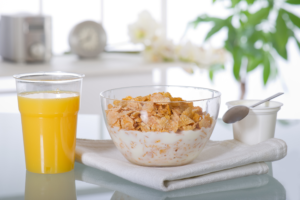
- Typical breakfast foods like orange juice and cereal wreak havoc on the gut and brain
- Even some seemingly healthier breakfast choices can cause energy slumps and inflammation
- The R2 breakfast (which incorporates protein and good fats) helps with energy and gut health
Everyone has heard the saying that breakfast is the most important meal of the day. Breakfast provides the energy we need to sustain and fuel our bodies. We understand that healing the gut is the key to optimal health for children with autism or adults simply wanting to function at their peak. The typical American breakfast diet is simply not going to achieve this. Foods like orange juice, toast, cereal, and milk are packed with sugar that can spike blood glucose levels, cause inflammation, and lead to an energy crash.
Over the years, food marketing companies have evolved to offer seemingly healthier options for health-conscious consumers. While foods like whole-grain bagels and a bowl of fruit are certainly a step up from Fruit Loops and sugary juices, they still can be problematic. These foods can cause some of the same issues as the original breakfast foods, leading to energy slumps and not helping us feel full.
The R2 Diet
So what’s a better way to fuel our bodies? Follow the R2 Protocol! Remember that R2 means we remove toxins and pesticides, then repair our systems with good foods and supplements. A fantastic R2 breakfast can include foods like eggs, avocado, uncured pastured bacon, and even Keto-style pancakes. These foods support good gut bacteria, feed the brain, and help us feel full longer.
To help your family feel their best and have long-lasting energy, choose high-protein, healthy fats foods for breakfast.
*This website is provided for informational purposes only and is not intended as a substitute for the advice provided by a healthcare professional.
References:
Discover What Quality Foods Can Replace Birthday Cake & Pizza
ARTICLE AT A GLANCE:

- Eating healthy at birthday parties can be challenging, but it is possible!
- Paleo recipes can be used to make more gut-friendly cupcakes and pizzas.
- Choosing vegan cookies or gluten-free pizzas from a bakery, restaurant, or grocery store can help lessen the damage of inflammation from sugar and dairy.
Birthday celebrations are one of those classic childhood experiences. Presents, balloons, piñatas, and games can be loads of fun, but the foods often served at these parties can be a challenge. For families trying to eat in ways that support gut and brain health, sugar-laden foods and preservatives can take a toll, and that’s not worth it. Thankfully, choices are available that mean you and your kiddo can eat healthy without missing out on the birthday fun.
Cakes
You have a few options for cakes: first, get to know your local bakeries and purchase healthier options like gluten-free or vegan cake/cupcake. Yes, these options may still have sugar or dairy, but these are still much better options than the full sugar, full flour options of a birthday cake. You can also look into quality products like “KNOW Foods” for healthier alternatives that still taste delicious.
Another option is to make your own! A simple google search of paleo recipes brings up a LOT of choices. Venturing into the world of cooking may seem a little intimidating at first, but you may be surprised at how much you enjoy it with a bit of practice. Whereas a regular store-bought cake may contain chemicals and harmful food dyes, making your food from scratch ensures you know exactly what you are putting into your body.
Pizza
For pizzas, you also have a few different choices. Some restaurants these days serve gluten-free pizzas that you can buy beforehand and bring with you to a birthday party. Making pizza from scratch can also be a fun family activity to try. Opt for organic tomatoes and a low-sugar marinara sauce. Find a gluten-free or cauliflower pre-made crust at the grocery store. If possible, head to a natural foods store to pick up some organic raw cheese. And whichever way you choose to make your pizza a little bit healthier, taking digestive enzymes can help lessen any gut inflammation.
Eating healthier isn’t always convenient, so if you forget before a party to buy or make a more gut-friendly treat, do what you can to minimize the damage. Maybe you and your child eat just the frosting of the cupcake. No one is perfect, but do what you can to stick to your health commitments, even at birthday parties.
*This website is provided for informational purposes only and is not intended as a substitute for the advice provided by a healthcare professional.
References

Buying Meat? How to Make Healthier Choices
ARTICLE AT A GLANCE:

- Meat is an excellent source of protein and healthy fat which supports optimal health
- Traditionally, lunch meats and conventionally raised meats have been full of fillers and pesticides that cause inflammation, but today, healthy options exist and are more readily available in a variety of delis and grocery stores
- When purchasing meat, opt for grass-fed, organic choices
Throughout the years, dietary meat has been controversial within the health community. While once believed to be too fatty or hard on our systems, we now understand that meat sources can provide rich proteins and high-quality fat that support optimal health and functioning. Still, the kind of meat matters, and we encourage our readers to make smart choices about what products they buy.
What To Avoid
Remember that the 2R Protocol means we remove highly-processed foods full of toxins, and nowhere is this more true than with meat. Lunchables may have been a fun treat as a kid, but the sad truth is that these are not healthy for the gut. Avoid nitrates and anything with carrageenan (which causes inflammation) like the plague.
Study the Labels
While it would be nice if we all had the time and resources to raise our own cattle, common sense tells us this isn’t practical. The good news is that most grocery stores and delis carry healthy meat options. Opt for grass-fed, organic beef, and buy locally raised meat whenever possible. Look at the ingredients carefully and go for what is the most simple. You want beef, salt, and maybe some spices. That’s it! For example, major distributors like Trader Joe’s and Costco carry grass-fed, organic, uncured beef hotdogs. Ground beef, chicken, and even decent turkey lunch meats (like Organic Farms brand) are delicious options that don’t wreak havoc on the gut.
*This website is provided for informational purposes only. It is not intended as a substitute for the advice provided by a healthcare professional.
References
- Remove These 4 Unhealthy Foods (2R Protocol: Part 1)
- Carrageenan: New Studies Reinforce Link to Inflammation, Cancer, Diabetes
Is All Inflammation Bad?
Article At A Glance:
-Inflammation is the body’s way to protect against infection by fighting off harmful invaders
-Acute inflammation is a normal response to injury and can aid in healing-Chronic inflammation can lead to cell death, gene alteration, sleep issues, and memory deficits

What is Inflammation?
If you’ve been reading our past articles, you likely know that we’ve talked a lot about inflammation issues. But what exactly is it?
Inflammation is the body’s biological response to harmful stimuli (including viruses, bacteria, and pathogens). It’s when the white blood cells essentially attack the “invaders” and protect you from infection. Inflammation is often marked by pain, swelling, and redness as the body seeks to kill off harmful agents or dead tissue. And while these symptoms aren’t very pleasant to experience, they indicate that your body is working to keep you healthy.
There are generally two types of inflammation: acute and chronic. Let’s discuss these two a bit more in depth:
Acute Inflammation
Acute inflammation refers to the body’s response to injury in a localized area (such as a bee sting). It has a rapid onset and is severe for a short time only while the body works to heal. People experiencing acute inflammation may have edema (water retention) and swelling in the area.
Chronic Inflammation
By contrast, chronic inflammation is not reduced to one area but can affect the entire body. It is a persistent state of fighting damaged cells and toxins that are causing harm. The immune system is constantly working overtime to try to fight off invaders, leaving the body exhausted and depleted from working too hard.
As you have likely guessed, chronic inflammation is what we are trying to avoid, as it can be especially compromising for children with autism. Research shows some of the specific negative effects of chronic inflammation include cell death and reduced formation, reduced oxytocin production (meaning less of that ‘loving” feeling of being emotionally connected), increased sensitivity, repetitive behavior (similar to stimming associated with ASD), and deficit in memory. If you are a parent of a child with autism, these symptoms are familiar to you, I’m sure.
So how do we keep our kids’ immune systems from becoming chronically inflamed? How do we keep their bodies from having to constantly fight against attacks and instead into a state of healing and growth? The answer is not easy in practice, but is actually quite simple: quality nutrition and supplements. Organic foods without toxic pesticides, supplements that promote wellness in digestion, recipes that appeal to picky eaters while also providing effective nourishment, etc.
References
- New Research Shows the Power of Broccoli
- What You Need To Know About Low-Inflammation Foods
- Repair with “Real” Foods & Powerful Supplements
- Assessment of Behavioral Disruption in Rats with Abdominal Inflammation
- What fruits and vegetables should I buy?
Are There Toxins in Your Tap Water?
ARTICLE AT A GLANCE:
- Water is an essential ingredient for our bodies, brains, and health
- Americans are overly trusting of their local government’s ability to ensure clean water
- Mounting research shows that tap water often contains toxins and trace amounts of drugs that pose a grave danger to our bodies
- Investing in a quality reverse osmosis water filtration system can remove the vast majority of contaminants in our tap water

Most everyone understands that water is an essential nutrient for our bodies; it helps us digest our food, excrete waste, and maintain vital functioning for all our organ groups. As we’ve talked about here on this blog, water is superior to virtually any other drink. Although some may find it a little boring at first, we can make it the “norm” beverage of choice and help our kids understand that drinking water is good, healthy, and satisfying.
But where does the water we drink come from? And how safe is it really? While we occasionally hear horror stories of tainted drinking water (like the crisis in Flint, Michigan or the controversy that activist Erin Brockovich helped expose about a California oil company contaminating the local water supply), it’s easy to think that these are isolated incidents and aren’t relevant to our own lives. Most of us are overly trusting of our states or municipalities and assume that they ensure our water is clean.
Unfortunately, the reality is that tap water is often filled with toxins that hurt our bodies and are even carcinogenic. It’s fairly well-known that most municipalities put fluoride in local water supplies. While there’s conflicting evidence that fluoridated water helps with dental health (which is the reason it’s said to be included), fluoride is known to be a neurotoxin that may have links to cancer.
The amount of potential toxins and other chemicals in tap water is too lengthy to include a comprehensive list. Here are some well-known dangers that could be coming straight from your kitchen sink: fluoride, chlorine, lead, and mercury. In fact, a recent study from Harvard University shows that the PFAs (polyfluoroalkyl and perfluoroalkyl substances) in tap water exceeded federal safety levels in 33 states. What’s more is that the Associated Press did in-depth investigation that concluded that trace amounts of prescription drugs (including mood stabilizers, estrogen, and other medications) were present in tap water (see the CNN clip in the above video). Clearly, we have a real risk of water contamination even here in America.
Getting Our Water Clean
With mounting evidence that our tap water contains toxins or trace amounts of prescription drugs, what can we do to protect our family’s health? My suggestion is to invest in a quality filter system for your home. Though there are different products with a varying amount of purification processes, I recommend one with at least 5 steps; the main things you want a filter to remove are carbon and charcoal. Don’t feel like you need to spend thousands of dollars on a filtration system either. A simple search on Amazon can help you find a reverse osmosis water filtration system for about $200 or less.
*This website is provided for informational purposes only and is not intended as a substitute for the advice provided by a healthcare professional.
References
- Are Food Replacements Worth It?
- Erin Brockovich is warning about an emerging drinking-water crisis in the US. Here’s how she recommends you protect yourself.
- Water Fluoridation & Cancer Risks
- Unsafe levels of toxic chemicals found in drinking water for six million Americans.
- Prescription Drugs Found in Drinking Water Across the US

The Inspiration Behind Bio-Heal
As the father of a son with autism who experienced a radical transformation in social behavior and overall health, I’ve dedicated my life to helping families with children with autism on their journey to healing through nutrition and supplements.
A major part of our story is Bio-Heal, a powerful supplement that I developed with a team of top chemists. This is unlike any other product on the market in terms of its value, ingredients, and overall effectiveness.
What’s in Bio-Heal?
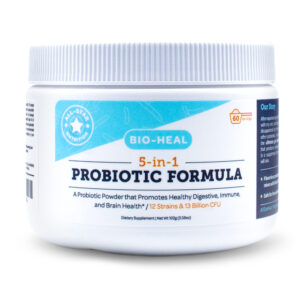
First and foremost, Bio-Heal is natural. It is sugar-free, dairy-free, toxin-free, filler-free, and gluten-free. Additionally, it’s flavorless so it’s easy to mix in with food or drink for your children to consume. Bio-Heal has a few key ingredients that make it unique: it contains “lactobacillus reuteri,” which is a bacteria that increases oxytocin in the brain and is shown to improve sociability. This bacteria can enhance learning and the ability to form neuro connections. Bio-Heal is also the only probiotic on the market to contain phosphatidylcholine, which is a lipid that improves memory and executive functioning.
Comparative Advantage
So how does Bio-Heal compare to other supplements on the market? To begin, it has 13 million CFUs (colony forming units) from 12 different strains, whereas Culturelle (the former leader in the market) has 5 billion CFUs from only 1 strain. What’s more is that Bio-Heal is more than a simple probiotic. It is 5 products in one bottle: it contains 1) probiotics (the beneficial bacteria), 2) prebiotics (food for the bacteria), 3) ingredient for gut lining support, 4) a brain booster for neurotransmitter support, and 5) digestive enzymes to maximize nutrition absorption.
One bottle of Bio-Heal contains 60 servings, which can last up to 4 months. Over 800 5-star reviews attest to the efficacy of this product, and we can’t wait for you to try it for your child. In fact, we are so confident in this supplement that we have a 90 day, no questions asked, money back guarantee if you are unsatisfied with it.
Click here to purchase Bio-Heal and begin your child’s journey to healing today!
References
- My Story: How It All Began
- Bio-Heal Mixing Tips
- What is Lactobacillus reuteri?
- What You Need To Know About
- Low-Inflammation Foods
Are Food Replacements Worth It?
Article At A Glance
- Cooking & preparing “real” food can be a challenge, so food replacements are common
- Most standard drinks & snacks are not healthy choices for immuno-compromised children
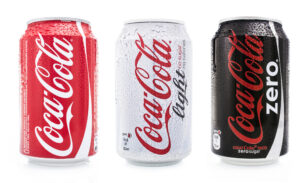
Our mission is to empower families to help alleviate the symptoms of autism by healing the body through proper nutrition and supplements. We know how important it is to fuel our systems with high quality protein, fats, and healthy carbs, but the truth is that meal planning, prepping, and cooking is time-consuming and can get pretty exhausting. In our busy culture of always being on the go, many people resort to quick fix food replacements to satisfy their hunger. Let’s take a look at some common foods choices (and identify some healthier options).
Drinks
Sodas are a common drink to reach for, but they’re high in sugar and should be avoided. Even “diet” sodas contain harmful artificial sweeteners and many of the same toxins in regular soda.
What about sports drinks? Some mistakenly think that Gatorade is a healthy choice because of its association with athletes. Sure it’s got electrolytes, but did you know that for many years, Gatorade contained brominated vegetable oil (BVO), which is a flame retardant that’s been banned in other countries? Gatorade, Powerade, and other sports drinks should also be avoided.
Juices are arguably the worst choice for drinks, as they have extremely high levels of sugar. Even organic juice has too much sugar to make it a viable option for immuno-compromised children.
Water and sparkling water are the best alternatives. Although it can take time to adjust away from other drinks, once a kid understands that water is the norm, they will begin to expect it and ask for it.
Cereal
Cereal is easy and fast, but unfortunately, it’s just not a good choice for our kids. With pesticides, sugar, and no real nutritional value, cereals (and really anything made in a factory) should be avoided. Thankfully, there are much better breakfast options available, such as eggs, avocado, uncured bacon, and even healthy pancakes!
Snacks
Goldfish, crackers, and fruit snacks are typical snacks to munch on these days, but not surprisingly, they’re not ideal for gut health. We’ve said it before and we’ll say it again: don’t eat foods that are manufactured or contain artificial coloring. Thankfully, there are some great alternatives for healthier snacks: things like apples, organic corn chips, grass-fed beef jerky, and almonds can satisfy a craving without irritating the gut.
*This website is provided for informational purposes only and is not intended as a substitute for the advice provided by a healthcare professional.
References
- Artificial Sweeteners: The Good & The Bad of Sugar Replacements
- Why You Should Stop Drinking Diet Soda
- Why Food Dyes Are Toxic To Your Health
- Breakfast of Champions: What To Eat in the Morning
- Why Was Flame Retardant in Gatorade, and Why Is It Still in Mountain Dew?
- Remove These 4 Unhealthy Foods (2R Protocol: Part 1)
